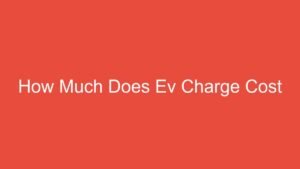
Contents
- How Much for a Honda Fit? Your Ultimate Guide to Smart Buying
- The “New” Reality: Why You’ll Be Buying Used
- What Influences the Price of a Used Honda Fit?
- Average Price Ranges for a Used Honda Fit
- Step-by-Step Guide to Buying a Used Honda Fit
- Beyond the Sticker Price: Hidden Costs to Consider
- Tips for Getting the Best Deal on a Honda Fit
- Common Mistakes to Avoid When Buying a Used Honda Fit
- Conclusion: Your Fit Adventure Awaits!
- FAQ
- Related Articles
How Much for a Honda Fit? Your Ultimate Guide to Smart Buying
Looking for the perfect blend of practicality, fuel efficiency, and surprising versatility in a compact package? The Honda Fit has long been a favorite, renowned for its “Magic Seats” and spacious interior. But with the Fit no longer sold new in the North American market, understanding how much a Honda Fit costs and what influences its price is more important than ever.
This detailed guide will break down everything you need to know about pricing a used Honda Fit, from market factors to the buying process, ensuring you make an informed and confident purchase. Let’s dive in!
The “New” Reality: Why You’ll Be Buying Used
First things first: If you’re wondering about the price of a new Honda Fit, it’s important to know that Honda discontinued the model in North America after the 2020 model year. This means your journey to owning a Fit will involve exploring the thriving used car market.
🛒 Recommended Product
Don’t worry, though! The Fit is celebrated for its reliability and longevity, making it an excellent used car choice. The key is knowing what to look for and how to assess its value.
What Influences the Price of a Used Honda Fit?
The price of a used Honda Fit can vary significantly based on several key factors. Understanding these will help you narrow down your search and set a realistic budget.
1. Model Year and Generation
The Honda Fit was produced across several generations, each bringing updates and refinements:
- First Generation (2007-2008 in North America): These are the oldest and generally most affordable. They offer basic reliability but might lack some modern features.
- Second Generation (2009-2014): A popular choice, often seen as a sweet spot for value. These models saw improvements in styling and features.
- Third Generation (2015-2020): These are the newest and consequently most expensive used Fits. They boast the most modern styling, improved fuel economy, and advanced technology features (especially in higher trims).
Generally, newer models with lower mileage will command higher prices.
2. Mileage
This is perhaps the biggest factor after the model year.
- Lower mileage (e.g., under 50,000 miles) typically means a higher price, as the car is perceived to have more life left.
- Higher mileage (e.g., over 100,000 miles) will bring the price down. However, don’t automatically discount high-mileage Fits. Honda engines are known to run for well over 200,000 miles with proper maintenance.
3. Condition (Interior & Exterior)
A well-maintained Fit, both cosmetically and mechanically, will naturally be more expensive.
- Exterior: Look for dents, scratches, rust, and tire wear.
- Interior: Check for rips in upholstery, stains, damage to dashboard components, and functionality of all electronics.
- Mechanical: This is critical. Are there any warning lights? Does the engine sound smooth? How do the brakes feel?
4. Trim Level
The Honda Fit was available in several trim levels, each offering different features and affecting the price:
🛒 Recommended Product
- LX: The base model, still very practical but with fewer amenities.
- Sport: Added sporty styling elements, larger wheels, and often paddle shifters (for automatic transmissions).
- EX: A step up, often including a sunroof, alloy wheels, fog lights, and a larger touchscreen infotainment system.
- EX-L: The top-tier trim, usually adding leather upholstery, heated front seats, and potentially navigation (depending on the year).
Higher trim levels will be more expensive than base models of the same year and mileage.
5. Location
Car prices can vary by region. Areas with a higher demand for compact, fuel-efficient cars (like urban centers) might see slightly higher prices. Conversely, areas with lower demand or more supply might offer better deals.
6. Seller Type (Private Party vs. Dealership)
- Private party sales can often be more affordable as you’re cutting out the dealership’s overhead and profit margin. However, they come with less recourse if issues arise.
- Dealerships (especially certified pre-owned programs) often offer warranties, reconditioning, and financing options, but these services come at a higher price.
Average Price Ranges for a Used Honda Fit
Given the variables, it’s challenging to give an exact price. However, here’s a general range to help you set expectations (prices are highly subject to change and vary by region):
- Older Models (2007-2012) with Higher Mileage (100,000+ miles): You might find these in the range of $4,000 – $8,000.
- Mid-Range Models (2013-2016) with Moderate Mileage (50,000 – 100,000 miles): Expect to pay between $8,000 – $13,000.
- Newer Models (2017-2020) with Lower Mileage (under 50,000 miles): These will typically be in the $13,000 – $20,000+ range, especially for higher trims.
Always remember: These are estimates. Use online valuation tools like Kelley Blue Book (KBB.com) or Edmunds.com for the most accurate current market values based on specific vehicle details.
Step-by-Step Guide to Buying a Used Honda Fit
Finding the right Honda Fit at the right price involves a structured approach.
Step 1: Research and Set Your Budget
- Define Your Needs: What generation or features are most important to you? Do you need a specific trim level?
- Research Market Prices: Use online tools (KBB, Edmunds, NADAguides) to get estimated values for various Fit years, trims, and mileages. This gives you a baseline for negotiation.
- Factor in Total Cost of Ownership: Beyond the sticker price, consider insurance, registration, and potential immediate maintenance costs. Set a clear, realistic budget that includes these extras.
Step 2: Find Potential Fits
- Online Marketplaces: Browse reputable used car websites (AutoTrader, CarGurus, Cars.com, Facebook Marketplace, Craigslist).
- Local Dealerships: Check both Honda dealerships (for certified pre-owned options) and independent used car dealers.
- Private Sellers: Keep an eye out for private listings, which can sometimes offer better deals.
Step 3: Vet the Vehicle History
- Request a Vehicle History Report: For any serious contender, always get a CARFAX or AutoCheck report. This will reveal accident history, flood damage, salvage titles, service records, and previous ownership.
- Check for Recalls: Use the NHTSA website to check for any open recalls on the specific VIN.
Step 4: Thorough Inspection
- Visual Inspection:
- Exterior: Look for rust (especially around wheel wells and underbody), mismatched paint (suggesting repairs), uneven panel gaps, and tire condition.
- Interior: Check for wear and tear, functionality of all buttons, lights, and the infotainment system. Make sure the “Magic Seats” operate smoothly.
- Under the Hood: Look for fluid leaks, frayed belts, dirty filters, and corrosion.
- Pre-Purchase Inspection (PPI): This is perhaps the most crucial step. Hire an independent, trusted mechanic to thoroughly inspect the car before you buy it. They can identify hidden issues that you might miss, potentially saving you thousands in future repairs. This is non-negotiable for a used car purchase.
Step 5: The Test Drive
- Drive It Like You Own It: Don’t just go around the block. Drive on various road types (city, highway) and speeds.
- Listen and Feel: Pay attention to engine noise, transmission shifts, brake feel, steering responsiveness, and any unusual vibrations or sounds.
- Test All Features: Try out the AC, heat, radio, power windows, cruise control, and any other amenities.
- Magic Seats: Operate the “Magic Seats” yourself to ensure they fold and unfold correctly.
Step 6: Negotiation
- Be Prepared: Know the market value and any issues identified during the inspection.
- Be Firm but Polite: Start with a fair offer based on your research and the car’s condition. Highlight any flaws found during the inspection to justify a lower price.
- Don’t Rush: Be willing to walk away if you can’t agree on a price. There will always be other Fits available.
Step 7: Finalize the Purchase
- Read All Paperwork Carefully: Before signing anything, review the bill of sale, title, and any other documents.
- Transfer Title and Registration: Ensure all necessary steps are taken to legally transfer ownership.
- Get Insurance: Do not drive the car off the lot without having insurance coverage in place.
Beyond the Sticker Price: Hidden Costs to Consider
When budgeting for your Honda Fit, remember that the purchase price is just one part of the equation.
- Insurance: Get quotes from several providers. Honda Fits are generally affordable to insure due to their safety record and low theft rates, but rates vary widely based on your age, location, and driving history.
- Registration & Taxes: These are state-specific fees that can add a significant amount to your initial outlay.
- Maintenance: While reliable, every car needs maintenance. Budget for oil changes, tire rotations, fluid checks, and eventual wear-and-tear items like brakes, tires, and spark plugs.
- Fuel: The Fit is very fuel-efficient, which is a major selling point. But factor in current gas prices for your monthly budget.
Tips for Getting the Best Deal on a Honda Fit
- Be Patient: The perfect Fit at the perfect price might not appear overnight.
- Expand Your Search Radius: Don’t limit yourself to just your immediate area. A slightly longer drive could lead to a better deal.
- Get Pre-Approved for Financing: If you’re getting a loan, having pre-approval from your bank or credit union gives you leverage and a clear understanding of your budget before visiting a dealership.
- Time Your Purchase: Towards the end of the month, salespeople might be more eager to hit quotas, potentially leading to better deals.
- Check Certified Pre-Owned (CPO) Options: While usually more expensive, a CPO Honda Fit from a dealership comes with a factory-backed warranty and has undergone a rigorous inspection, offering greater peace of mind.
Common Mistakes to Avoid When Buying a Used Honda Fit
- Skipping the Pre-Purchase Inspection (PPI): This is the biggest mistake you can make. What seems like a small saving can lead to massive repair bills later.
- Not Checking the Vehicle History Report: Ignoring a car’s past can lead to purchasing a lemon with undisclosed damage.
- Falling in Love Too Quickly: Emotional buying can lead you to overlook flaws or overpay. Stick to your budget and rational assessment.
- Not Test Driving Thoroughly: A quick spin around the block isn’t enough. Put the car through its paces.
- Ignoring the Total Cost of Ownership: Focusing only on the purchase price without considering insurance, taxes, and potential immediate repairs can lead to financial strain.
- Not Comparing Prices: Failing to research market values means you won’t know if you’re getting a good deal or being overcharged.
Conclusion: Your Fit Adventure Awaits!
The Honda Fit remains a highly sought-after used vehicle for good reason. Its unmatched practicality, surprising cargo space, excellent fuel economy, and renowned Honda reliability make it an intelligent choice for urban dwellers, small families, and anyone who appreciates smart design.
🛒 Recommended Product
By understanding what influences its price, diligently following the buying steps, and avoiding common pitfalls, you can confidently navigate the used car market and find a Honda Fit that fits your needs and your budget. Happy car hunting!
FAQ
Q. How much did a new Honda Fit cost before it was discontinued in markets like the US?
A. Before its discontinuation, a new Honda Fit typically ranged from approximately $16,000 for a base LX model up to around $22,000 for a fully loaded EX-L trim, depending on the model year and specific features.
Q. What is the typical price range for a used Honda Fit today?
A. The price for a used Honda Fit varies widely based on its year, mileage, condition, and trim level. You can generally expect to find models ranging from $5,000 for older, higher-mileage examples (e.g., 2007-2010) up to $18,000 or more for well-maintained, low-mileage third-generation models (2015-2020).
Q. How do the prices of different Honda Fit generations compare in the used market?
A. First-generation (2007-2008) Fits are generally the most affordable, often under $7,000. Second-generation (2009-2014) models typically fall between $6,000 and $12,000. The third-generation (2015-2020) models command the highest prices, usually from $10,000 up to $18,000+, due to their newer technology and lower average mileage.
Q. What factors significantly influence the used price of a Honda Fit?
A. Key factors include the car’s age (newer means higher price), mileage (lower mileage increases value), overall mechanical and cosmetic condition, trim level (e.g., EX-L is pricier than LX), and geographical location. A clean title and a comprehensive service history also add value.
Q. Is the Honda Fit considered a good value for its price?
A. Yes, the Honda Fit is widely regarded as an excellent value. Its reputation for reliability, exceptional fuel economy, surprisingly spacious and versatile interior (thanks to the Magic Seat), and low cost of ownership make it a highly desirable used car, often holding its value well.
Q. What are the average annual running costs for a Honda Fit, beyond just the purchase price?
A. Beyond the purchase price, average annual running costs for a Honda Fit are relatively low. This includes fuel costs (excellent MPG), insurance (generally affordable), and maintenance (Honda parts are common and repairs are typically not expensive). Expect to budget around $300-$500 annually for routine maintenance, not including major repairs or tire replacements.
Q. Are Honda Fit models with higher mileage still worth considering, and how does that affect the price?
A. Yes, Honda Fits are known for their longevity, so higher-mileage models (e.g., 150,000+ miles) can still be a good buy if they have a documented service history and are in good condition. Such models will naturally be priced significantly lower than their lower-mileage counterparts, offering a more budget-friendly entry point into Fit ownership.
Related Articles
How Much Does a Tesla Cybertruck Cost
How Much Does a Tesla Cybertruck Cost? Your Ultimate Guide to Pricing & Purchase The Tesla Cybertruck has captured imaginations with its futuristi…
How Much Is a Tesla
How Much Is a Tesla? Unpacking the Cost of Your Dream EV Dreaming of driving a Tesla? You’re not alone! These innovative electric vehicles have …
Affiliate Disclosure: As an Amazon Associate, I earn from qualifying purchases made through links on this site.















